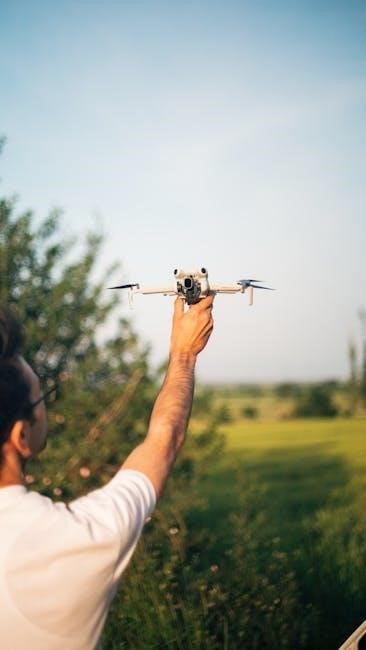
Drone manuals are essential resources for both novice and experienced pilots. They provide critical information on safe operation, maintenance, and legal guidelines. These manuals cover everything from basic flight controls to advanced features and troubleshooting, ensuring users can maximize their drone’s potential.
Importance of User Manuals
User manuals are indispensable tools for anyone operating a drone, regardless of experience level. These manuals provide comprehensive instructions on drone assembly, setup, and safe operation, which are crucial for preventing accidents and ensuring optimal performance. They detail pre-flight checks, emergency procedures, and legal regulations, enabling pilots to fly responsibly and avoid potential legal issues.
Furthermore, user manuals offer guidance on drone maintenance, troubleshooting common problems, and understanding advanced features. By consulting the manual, users can extend the lifespan of their drones, enhance their flying skills, and fully utilize the capabilities of their devices. Ultimately, user manuals are essential for promoting safe, efficient, and enjoyable drone operation.
Target Audience: Beginners and Experienced Pilots
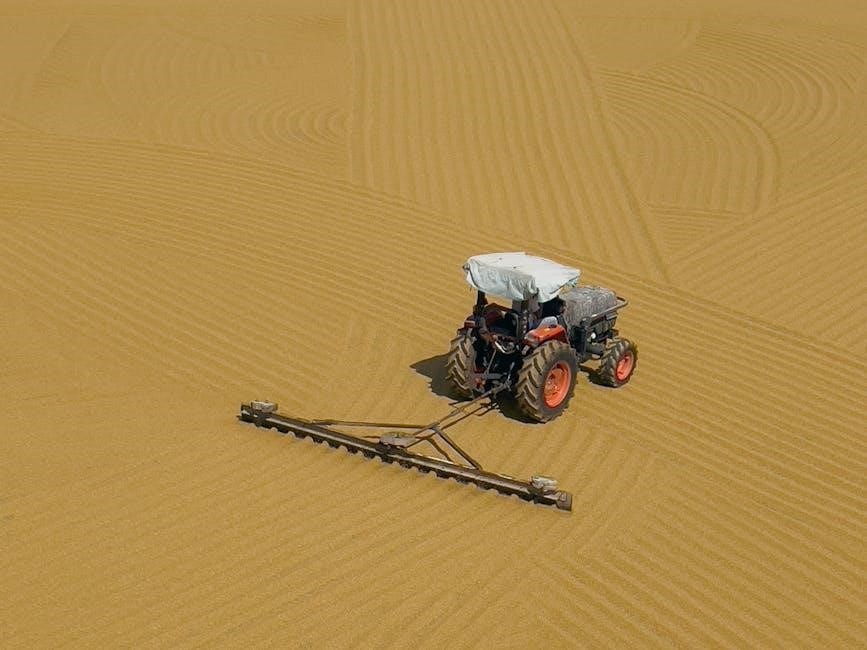
Drone manuals cater to a diverse audience, ranging from beginners taking their first flight to experienced pilots seeking to master advanced techniques. For beginners, the manual serves as a comprehensive guide to understanding drone components, basic flight controls, and essential safety precautions. It offers step-by-step instructions on setup, takeoff, landing, and basic maneuvers, ensuring a smooth and safe introduction to drone flying.
Experienced pilots, on the other hand, can utilize the manual to explore advanced features, customize settings, and troubleshoot complex issues. The manual provides in-depth information on intelligent flight modes, camera adjustments, and maintenance procedures, enabling seasoned pilots to enhance their skills and maximize their drone’s potential. Thus, drone manuals are valuable resources for all skill levels.
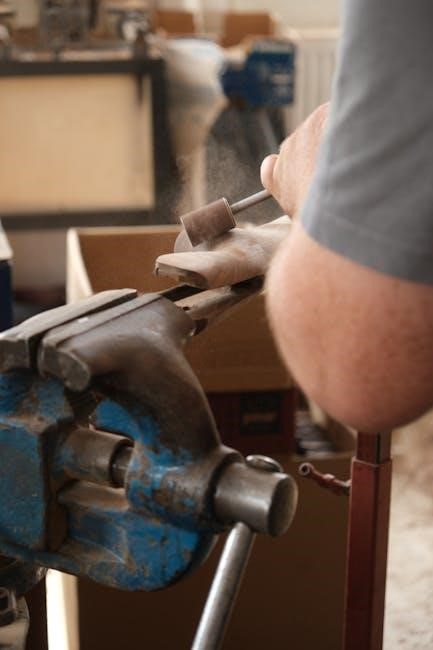
Safety Precautions
Prioritizing safety is paramount when operating drones. This section outlines essential pre-flight checks, emergency procedures, and legal regulations. Adhering to these guidelines minimizes risks and ensures responsible drone operation for all users.
Pre-Flight Checklist
Before each flight, a thorough pre-flight checklist is crucial for ensuring safety and optimal performance. Begin by verifying that the drone and remote controller batteries are fully charged. Inspect the propellers for any signs of damage, such as cracks or bends, and ensure they are securely attached. Calibrate the compass according to the manufacturer’s instructions to avoid navigation issues.
Confirm that the camera lens is clean and free of obstructions. Check the weather conditions, including wind speed and visibility, to ensure they are within safe operating parameters. Clear the flight area of any obstacles, such as trees, power lines, or people. Finally, review the flight plan and set appropriate return-to-home altitude.

Emergency Procedures
In the event of an emergency during flight, pilots must be prepared to act quickly and decisively. One critical procedure is initiating the Return-to-Home (RTH) function if the drone loses signal or faces a low battery. If the drone becomes unresponsive, attempt to regain control by adjusting altitude or repositioning the remote controller.
In case of a flyaway, immediately cut the throttle to initiate an emergency landing in a safe area. If a crash is imminent, prioritize minimizing damage to people and property. After any incident, thoroughly inspect the drone for damage and consult the manual for troubleshooting steps. Always report any serious incidents to the appropriate authorities.
Legal Regulations and Guidelines
Operating a drone requires strict adherence to local and national regulations. Before each flight, familiarize yourself with airspace restrictions, no-fly zones, and altitude limitations in your area. Many regions require drone registration and pilot certification. Always maintain a visual line of sight with your drone during operation, and avoid flying over crowds, airports, or sensitive infrastructure.
Respect privacy laws by not recording individuals without their consent. Be aware of temporary flight restrictions (TFRs) issued by aviation authorities. Compliance with these regulations ensures safe and responsible drone operation, preventing accidents and legal repercussions. Failure to comply can result in fines, penalties, or even confiscation of the drone.

Drone Components and Functions
Understanding your drone’s components and their functions is crucial for safe and effective operation. From the propellers and motors to the camera and sensors, each part plays a vital role in flight and data collection.
Overview of Drone Parts
A drone consists of several key components working together to enable flight and functionality. The frame provides structural support, housing the electronic speed controllers (ESCs) that regulate motor speed. Motors, in turn, drive the propellers, generating lift and thrust. The flight controller acts as the brain, processing sensor data and pilot commands. The battery supplies power to all components, while the GPS module enables autonomous navigation. The camera, often mounted on a gimbal, captures aerial images and videos. Radio transmitters and receivers facilitate communication between the drone and the remote controller. Understanding these parts is crucial for drone operation.
Remote Controller Functions
The remote controller serves as the primary interface for piloting a drone, offering a range of functions essential for flight control and operation. Joysticks or control sticks govern the drone’s movement, including altitude, direction, and speed. Buttons and switches activate various features like takeoff, landing, and return-to-home (RTH). A display screen provides real-time telemetry data, such as battery level, GPS signal strength, and altitude. Dials and sliders adjust camera settings, including exposure and gimbal control. Some controllers feature customizable buttons for personalized controls. Understanding the function of each control element is crucial for safe and effective drone piloting, allowing for precise maneuvers and optimal performance.
Camera and Gimbal Operation
The camera and gimbal system are vital for capturing high-quality aerial footage. The gimbal stabilizes the camera, ensuring smooth video and sharp photos even during drone movement. Camera settings such as ISO, aperture, and shutter speed can be adjusted to optimize image quality in various lighting conditions. Understanding white balance is crucial for accurate color representation. Focus settings allow for sharp imagery, whether manually adjusted or set to autofocus. Recording video and capturing still images are primary functions, often controlled via the remote or a mobile app. The camera’s field of view affects the scope of the captured scene. Mastering these elements ensures professional-looking aerial visuals.

First Flight Preparation
Preparing for your initial drone flight involves charging batteries, installing necessary software, and ensuring a stable connection between the drone and the remote controller. These steps are vital for safe and successful operation.
Battery Charging and Management
Proper battery charging and management are crucial for ensuring safe and extended drone operation. Always use the manufacturer-provided charger to avoid damaging the battery. The red light indicates charging, and the light turns off or changes color when fully charged. Allow the battery to cool down before charging after a flight. Store batteries in a cool, dry place, away from direct sunlight, to prolong their lifespan. Regularly check for swelling or damage. Avoid overcharging or completely depleting the battery, as both can reduce its overall health. Following these guidelines helps maintain optimal performance and prevents potential hazards.
Software Installation and Updates
Ensuring your drone’s software is correctly installed and up-to-date is vital for optimal performance and security. Begin by downloading the appropriate software from the manufacturer’s official website. Follow the installation instructions carefully, ensuring compatibility with your operating system. Regularly check for updates to benefit from new features, bug fixes, and security enhancements. These updates often include performance improvements and address potential vulnerabilities. Connect your drone to your computer or mobile device to initiate the update process. Always back up your settings before updating. Keeping your software current will improve your flying experience;
Connecting the Drone to the Remote Controller
Establishing a secure connection between your drone and remote controller is crucial for flight control. Begin by ensuring both devices are powered on. Consult your drone’s manual for the specific binding procedure, as it varies by model. Typically, this involves pressing a combination of buttons on both the drone and controller until a connection is established. Verify the connection by observing the indicator lights on both devices. A solid or consistently blinking light usually indicates a successful link. Some drones require using a mobile app to complete this process. Once connected, calibrate the controller.
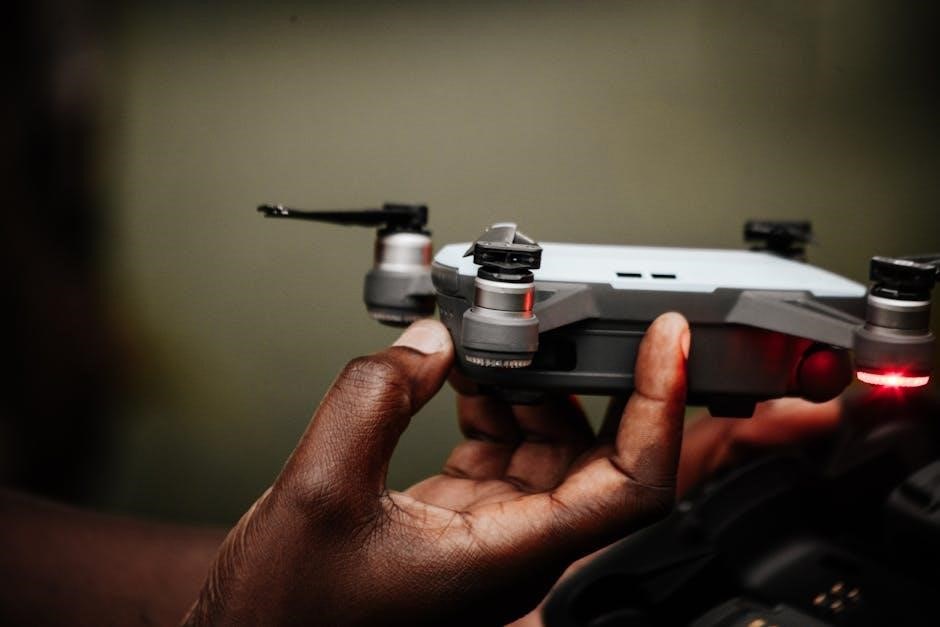
Basic Flight Operations
Mastering basic flight operations is fundamental to drone piloting. This section covers essential procedures like takeoff, landing, hovering, and basic maneuvers. Understanding these operations ensures safe and controlled flight experiences for all skill levels.
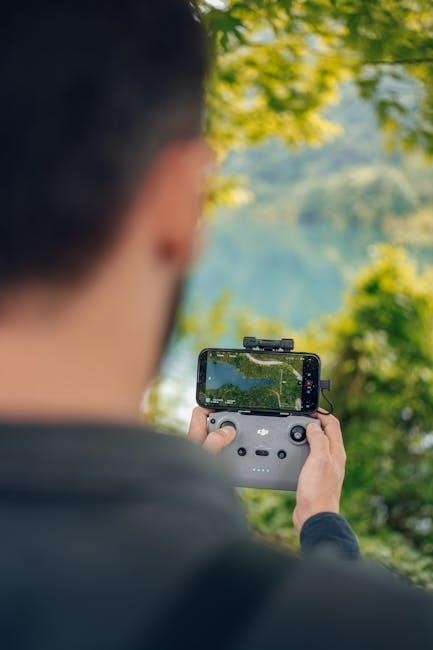
Takeoff and Landing Procedures
Safe drone operation hinges on mastering takeoff and landing procedures. Before takeoff, ensure the drone is on a level surface, away from obstructions. Verify battery levels and GPS signal strength. Initiate the motors and gently ascend, maintaining control. During landing, approach a flat, clear area. Reduce altitude gradually, avoiding sudden drops.
Once close to the ground, carefully descend until the drone touches down. Immediately stop the motors to prevent tip-overs or other accidents. Always monitor wind conditions, and be prepared to adjust your approach accordingly. Consistent practice of these procedures ensures safer and more reliable drone flights.
Basic Maneuvers: Hovering, Forward Flight, Turning
Mastering basic maneuvers is crucial for drone control. Hovering requires maintaining a stable position in the air, adjusting throttle to counteract wind. Forward flight involves gently pushing the control stick forward, monitoring speed and altitude. Practice smooth, controlled movements to avoid jerky motions.
Turning involves using the yaw control to rotate the drone, coordinating with altitude and direction. Start with slow, deliberate turns, gradually increasing speed as your confidence grows. Consistent practice in a safe, open area will improve your proficiency. These skills are foundational for more complex flight operations.
Using GPS and Return-to-Home (RTH) Function
The GPS system is vital for stable flight and precise positioning. It allows the drone to maintain its location and altitude, especially in windy conditions. The Return-to-Home (RTH) function is a critical safety feature, automatically returning the drone to its takeoff point when activated.
To use RTH, ensure GPS is enabled and the home point is accurately set before flight. Familiarize yourself with the RTH button on the remote controller. Test the RTH function in a controlled environment to understand its behavior. Always be prepared to manually override RTH if necessary, especially in areas with obstacles.
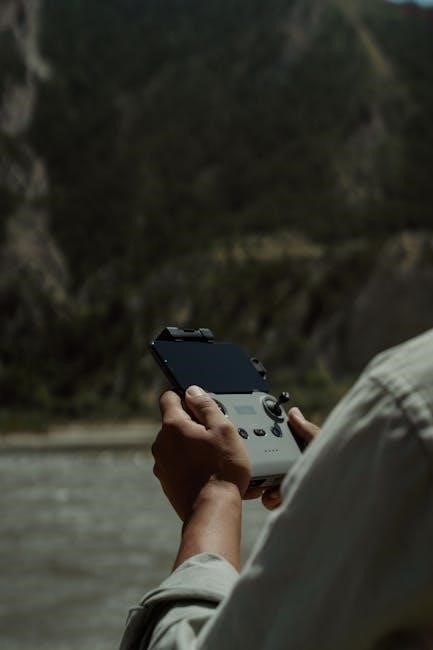
Advanced Features and Settings
Unlock your drone’s full potential by exploring advanced features. Dive into intelligent flight modes, customize camera settings, and troubleshoot common issues. Mastering these aspects enhances your flying experience and aerial photography skills.
Intelligent Flight Modes
Intelligent Flight Modes offer automated flight patterns, simplifying complex maneuvers. These modes often include features like Follow Me, where the drone tracks a subject, and Orbit, where the drone circles a point of interest. Waypoint navigation allows pre-planned routes, enhancing creative possibilities.
These modes can assist in capturing unique aerial perspectives. Each mode varies by drone model, so consult the user manual for specific instructions. Understanding these settings will significantly improve flight efficiency and allow for more creative freedom when capturing aerial footage. Always ensure a safe environment before activating.
Camera Settings and Adjustments
Mastering camera settings is crucial for capturing high-quality aerial imagery. Adjusting resolution, frame rate, and ISO can significantly impact video and photo clarity. Understanding white balance ensures accurate color representation, while exposure settings control brightness. Explore different shooting modes, like HDR, for enhanced dynamic range.
Experimenting with these settings allows for creative control and optimal results in varying lighting conditions. Consult the drone’s manual for specific menu options and recommendations. Proper adjustments will yield stunning visuals. Familiarizing yourself with these features will elevate your aerial photography and videography skills. Remember to always prioritize safety while adjusting.
Troubleshooting Common Issues
Drones, like any technology, can encounter occasional issues. Common problems include connectivity failures, motor malfunctions, and battery drainage. The user manual provides troubleshooting steps for these scenarios. Start by checking the connections between the drone and the remote controller. Ensure the firmware is up to date, as outdated software can cause problems.
Inspect the propellers for damage and replace them if necessary. If the drone is not responding, try restarting both the drone and the remote controller. For battery issues, ensure proper charging procedures are followed. Refer to the manual for error codes and their corresponding solutions. If problems persist, contact customer support for further assistance.
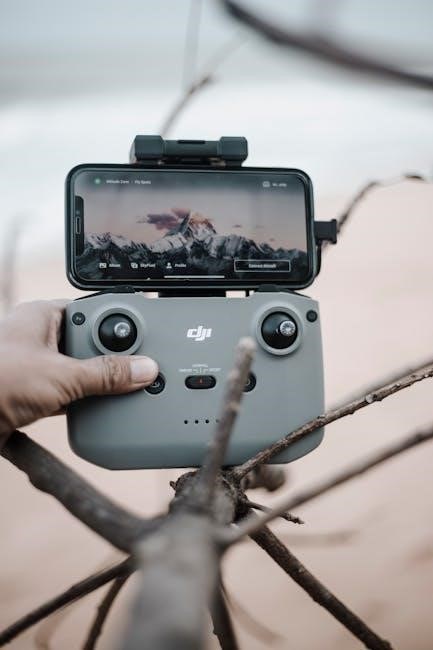
Maintenance and Care
Proper drone maintenance ensures longevity and optimal performance. Regular cleaning, careful storage, and timely propeller replacement are crucial. Keeping firmware updated also enhances functionality. These practices prevent costly repairs and ensure safe flights.
Cleaning and Storage
Maintaining your drone’s cleanliness and ensuring proper storage are vital for its longevity and consistent performance. After each flight, gently wipe down the drone’s exterior with a soft, dry cloth to remove dust, dirt, or moisture. Pay close attention to the camera lens, sensors, and moving parts, using specialized lens cleaning solutions if necessary.
For storage, choose a cool, dry place away from direct sunlight and extreme temperatures. A dedicated drone case or bag is ideal for protecting it from physical damage during transport and storage. Ensure batteries are stored separately and at a recommended charge level to prevent degradation. Regularly inspect the drone for any signs of wear or damage before each flight, addressing issues promptly to avoid further complications.
Propeller Replacement
Propeller replacement is a crucial aspect of drone maintenance, ensuring optimal flight performance and safety. Regularly inspect propellers for cracks, chips, bends, or any other signs of damage. Damaged propellers can cause instability, reduced flight time, and even pose a safety risk.
When replacing propellers, always use genuine or manufacturer-approved replacements to maintain compatibility and performance. Ensure the correct propeller type is used for each motor, paying attention to the direction of rotation (clockwise or counterclockwise). Before installing new propellers, carefully clean the motor mounts and propeller attachment points. Securely fasten the propellers according to the manufacturer’s instructions, using the appropriate tools and torque settings. After replacement, perform a test flight in a safe, open area to verify proper function and balance.
Firmware Updates
Firmware updates are essential for maintaining your drone’s performance, stability, and security. Manufacturers regularly release updates to address bugs, improve functionality, and introduce new features. Staying up-to-date with the latest firmware ensures your drone operates at its best.
Before initiating a firmware update, ensure that your drone’s battery is fully charged to prevent interruptions during the process. Back up any critical data, such as flight logs or settings, as updates can sometimes reset the drone’s configuration. Follow the manufacturer’s instructions carefully, typically using a dedicated mobile app or computer software. Avoid turning off the drone or interrupting the update process, as this can cause serious damage. After updating, verify that all systems are functioning correctly by performing a test flight in a safe environment.